Roma editor Adam Gough on his route into the industry and what it was like working with Alfonso Cuarón on the Oscar-nominated film.
Fifteen years ago, 22-year old media student Adam Gough landed his first professional work as part of the IBC TV team in Amsterdam. Two years later he was making tea for Alfonso Cuarón. Next week, the film he crafted in the edit room with the director is odds on to win the Best Picture Oscar. He shares his extraordinary story and the making of Roma with IBC365.
“It’s incredibly exciting to experience the reaction to what is a very personal story told in Spanish about an indigenous domestic worker,” Gough says of Cuarón’s acclaimed picture. “When we won [Best Film] at the Bafta’s and before we all went on stage there was a moment when we couldn’t believe it. It’s been a lot of hard work.”
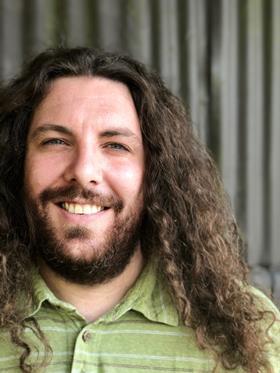
All roads lead to Roma
Like many kids, Gough fell in love with the movies watching Star Wars and Mary Poppins but it wasn’t until he was a teenager in Cornwall where he began making short videos [on tape] that he got the bug.
At Southampton [now Solent] University he studied film and video, a technical degree that gave him a solid grounding in everything from waveform to workflow.
“I could wire a cinema for sound and this technical knowledge was a massive advantage to me as an assistant editor and helped me get my foot in the door.”
Through the University he was one of a handful of students selected to intern with Shooting Partners to produce daily news as part of IBC TV at IBC 2004. Gough was a boom operator.
“I remember going over to the Avid and Final Cut Pro stands and just being in awe of the software,” he says. “The experience convinced me more than ever to get into the industry.” It was his first professional gig.
“Since my background is anchored in the technical aspects going on to working with [Cuarón] who is in complete control of everything and knows his way around all the tools was a tremendous bonus.”
What Gough lacked at this stage was confidence in his creative chops. The ability to judge material on its merits, interpret a director’s vision and input his own ideas were skills he learned on a succession of jobs.
“I graduated with no contacts and needed work experience so I fired off dozens of CVs to production companies,” he says. “You have to start somewhere.”
Samuelson Productions replied, giving him a couple weeks stint as runner on British spy kids drama Stormbreaker (2006). “I learned about continuity notes and filing and the basic operation of a cutting room. If you’ve never been on a film production you have no idea how much paper work there is.”
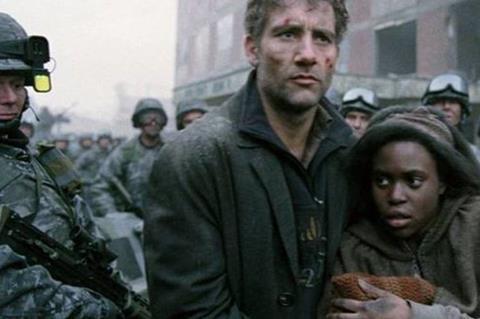
His first paid job was PA to Alfonso Cuarón on dystopian thriller Children of Men (2006). “Everything was new to me. I learnt assistant editing. I made tea and delivered lunch to Alfonso.
“He knew I was into music and got me making him a playlist each week. So, I’d mix a CD of music I was listening to, to help inspire some musical choices in the film. It was a fun, creative interaction.”
He was trainee to Chris Lebenzon as he cut Tim Burton’s Sweeney Todd. “Just seeing how he was overlapping action was a fantastic bit of film schooling for me.”
From editor Lee Smith on X Men: First Class, Gough learned how to handle studio politics. As second assistant to Jon Gregory on In Bruges he saw how the editor crafted rhythm and flow.
“It was my first truly creative role where my opinion mattered,” says Gough. “I wasn’t just part of the machinery getting out turnovers and running around. It suddenly all slowed down for me and started to come into focus.”
He was assistant editor to Mark Day on Harry Potter and the Deathly Hallows (parts I and II) and perhaps because Cuarón had directed a previous entry in the franchise the Mexican made the association once more.
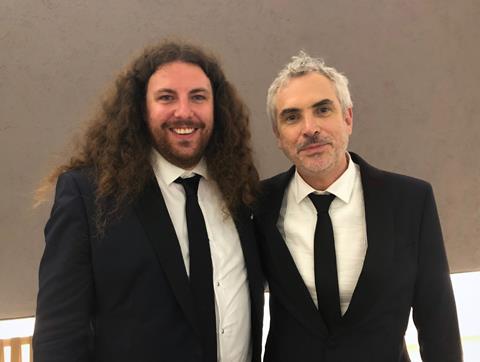
Cuarón was lining up his next feature after the Oscar winning Gravity and needed an editor but Gough still had to audition for the part.
“I guess they knew that I knew the workflow and what was expected, enough anyway to get the opportunity of working for him again.”
The audition was to cut a 90-second promo for a jewellery brand which Cuarón had already shot.
“His requirements were very, very technical. He wanted an editor competent in VFX, compositing, editing and heavy lifting in the Avid.
“At that point I was going to work on whatever was going to be his next project. I read scripts he’d developed. When it became clear that it was going to be a low budget picture set in Mexico and filmed in Spanish my worry was that I might be surplus to requirements. I was expecting a ‘thank you but no thanks’ but he said, ‘We’re going to need you out there in a couple of months’. I asked him again whether my skills and complete lack of language were what he needed. He was incredibly supportive and said, ‘Don’t worry. Mine’s good enough. I think we can get through it.’”
In fact, Gough’s technical nous was not all that the director desired.
“Part of the process of doing that commercial with Alfonso was for him to find out whether I had a voice. He made it very clear that if you have two people in a room and only one opinion then why have two people in the room? He wanted me to be vocal. I was probably a bit cheeky on Children of Men and perhaps he remembered that. Although he is writer, director, cinematographer throughout making Roma there were many points where he would ask for other opinions. That’s what I really enjoyed working with him.”
Building atmosphere
After helping prep the shoot on location in Mexico City, Gough handled all the rushes in London and later, during editorial, at the director’s house in Italy. In fact, everything passed through his desk.
“I was the middle of the hourglass,” he says. “Sound notes, grading notes, VFX notes, everything was passing through me. There was so much information to digest, pass on and track.”

What stands out from the film is the atmospheric detail of the 1970s city-scape, the streets where Cuarón grew up.
“This world is a million miles from mine so I felt it my duty to understand the social and political context of the story,” says Gough. “I read up on the background, researched the politics. So, in the scenes of the riot outside the furniture store there are protestors wearing T-shirts with slogans. These slogans have a political meaning.”
This scene represents the Corpus Christi Massacre but passes with little explanation in Roma. The outburst of violence is shocking but Cuarón is interested in the minutiae of civilian life.
“I probably watched every TV commercial that aired in Mexico in 1970. [Music supervisor Lynn Fainchtein] sourced some, there’s a lot on YouTube and Alfonso had this bible of TV times listing every programme that aired in Mexico in that period. One scene that didn’t make the final cut shows the kids watching TV. We had to find the rights shows for that. Everything was researched to a level that would make it real to the time and place.”
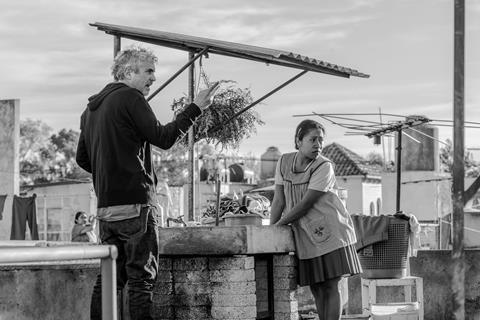
You can usually rely on a score to help sell the emotion of a scene but Roma eschews a composer. Instead it relies on an intricate sound track assembled from source music. With Fainchtein, Gough experimented with radio content, listening to hours of commercials, presenters talking and station IDs from the period.
“I learned the calls the street vendors would make. There are trees in particular places in the city that would have a certain type of bird in them so we sourced their call. When the father returns home early on in the film, there is a waltz playing on the radio that is perfect for the moment.”
The film is not just told in Spanish but also Mixtec, an umbrella term for dozens of dialects. A number of these are worked into a scene set at a hospital to intentionally show the diversity of the city.
“We had people travel from all over the country who spoke these languages to make loop recordings (ADR crowds). If we could see any extra within 12 ft of the camera Alfonso wanted us to write a line of dialogue for them, then record it and sync it to the picture. Every element of dialogue anyone says in the movie is relevant. There’s no banter about the weather. It is political.”
It helped that Gough’s previous film, the documentary Hands of God (about an Iraqi bid for the 2016 Rio Olympics), was in Arabic. “I haven’t worked in English for nearly three years.”
He says, “I’d already had such deep conversations with Alfonso about everything, that once in the sound mix, I could go off into a different room and begin pre-mixing the vast amounts of loop groups making sure everything was set up to work in Dolby Atmos. The aim was to fill the space around you and create a geography.”
Notwithstanding the extraordinary attention to detail, the film’s long-takes and wavelike structure was the biggest challenge for the editor.
Long takes
“Alfonso wouldn’t let anyone have the script, either me or the cast or crew,” Gough reveals.
“The actors would get their pages on the day and I didn’t get my hands on it until after the shoot, so I didn’t know what I was going to see in dailies. I’d be in London just watching dailies each day but I could tell what he wanted from watching it.
“He shot incredible long handles on each shot so the camera would start rolling 30 seconds before any action occurred and continue rolling 30 seconds after the scene had notionally finished. The decision of when to enter a scene and when to cut from it was driven by finding the most natural flow for the edit, one which kept alive its emotional intent. We’d normally cut 10 or 12 seconds after the end of the last line of dialogue. It’s not about forcing the audience into the scene but making sure they experience it.
A scene in which Cleo, the maid, tells Sofia, her employer that she is pregnant and it begins to hail outside is three and half minutes long.
“Alfonso shot that 60 times. We put them all on a timeline and watched every single one in order to make the right selection.”
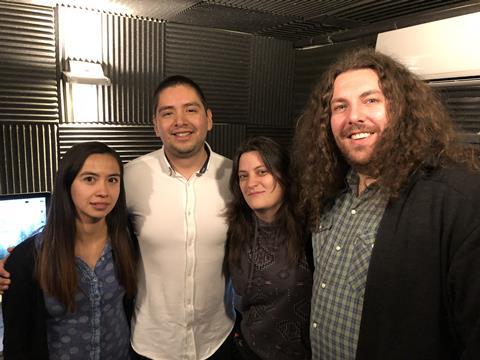
Since almost 90% of each take contains some visual effects - from basic clean-up to sky and entire building replacements – Gough had to be sure.
“When you select a three-minute long take and turn it over to VFX you don’t want to change that down the line because the amount of prep work and design that goes into the making the shot will be wasted.”
Some scenes, such as the opening credits of a floor being mopped and the dramatic seaside rescue sequence, were composite shots carefully masked in the edit to appear as one but Gough has been asked not to comment on this. The mystique needs to be preserved.
“Roma has definitely taken me to a new level in my career,” says Gough, who is heading to Thailand on his next project.
“I want to work with more filmmakers of Alfonso’s calibre. I’ve been incredibly lucky to work with some exceptional artists who make special movies. That’s why I got into the industry - to make films that affect people. Now I am allowed to call myself a professional in this particular field, hopefully I’ll continue working.”
- Read more Craft Leaders: Barry Alexander Brown, Editor
- Read more Craft Leaders: Joe Walker, Editor
Oscars 2019: The winners
- 1
- 2
 Currently reading
Currently readingCraft leaders: Adam Gough, Editor
- 3
- 4
- 5
- 6
- 7












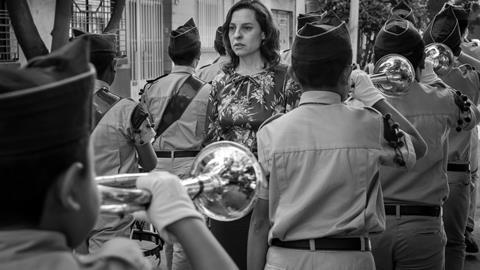


















No comments yet